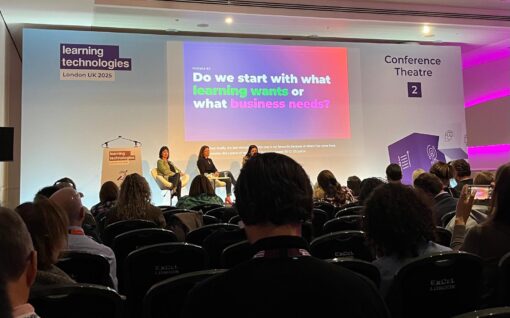Break out of the bubble

If the academic community wants to influence online conversations about R&D then the first thing it must do is get where the action is. Join those online conversations. Start new ones up. Create some noise around interesting research and engage with what is going on around you online. And don’t be afraid to try new ways of engaging and communicating with people.
Beyond the Bubble: the online conversation on research and development, a recent piece of research by the think tank Demos shows that academics need to work harder at being part of the online conversation and at tackling the growing problem of misinformation.
It all sounds pretty easy – having an online chat with people about what you do and what your research says. But there is more to being an effective online communicator than simply dumping content online or tweeting a link to your research and expecting people to notice it, read it/listen to it, be interested in it or share it. Fellow academics may be happy with this approach, but it won’t cut it with the general public.
In order to influence online conversations you have to understand how people behave online and how different forms of content work. What content really gets a debate going online? Where are the good conversations taking place, why and how? How can you pull in a wider range of people and not just fellow academics?
The Demos report looks at how research and development is currently discussed and communicated about online. It threw up some interesting findings, some of which I will discuss here, starting with this:
Different communities, both across and within platforms, will engage with content in different ways. Blanket promotion of the same content across platforms may not an effective way to engage the public. Linking work to the lived experience of each community may see better engagement with research.
So putting out the same content for everyone is not going to work for everyone. Many of us already know this, but many of us still do it anyway because it’s the quickest and easiest way to get content out there. Don’t do it. Take the time to tailor content to different communities. Hone in on what matters to them and what messaging will have the most impact. Think about which channels and what types of content will lead to the greatest engagement.
Scientific academic circles have done a lot of research into audience segmentation in order to improve the impact of climate change research in particular. This is something that Dr Mike S. Schäfer, professor of science communication at Zurich University, spoke about in a recent conversation with me.
Knowing your audience is key to getting your message heard. That is pretty much the first rule of journalism. Actually, it’s the first rule of other disciplines too – public speaking, teaching, lecturing, sales, marketing….Pitch it wrong and it won’t land.
So, know your audience and how to connect with them. After a recent conversation with Professor Joe Smith, director of the Royal Geographical Society (with the Institute of British Geographers), I feel a bit twitchy about using the word audience in this context. By definition, a conversation is a two (or more) way process, it’s not one person telling and an audience listening. Read more about what Smith has to say about this here https://insightsmedia.co.uk/articles/research-needs-to-be-more-accessible-and-interactive-an-interview-with-professor-joe-smith/.
If people feel they are being told stuff or lectured at, they switch off and the conversation dies. Online conversations need to be interactive and engaging and they need to forge an emotional connection.
Often, people like to relate content to personal experiences or to things that they already know. It makes content feel more relevant and meaningful so help them make those connections.
People will engage with research by relating them to literature, film, or other pop culture reference points.
Bring yourself into the picture too. This doesn’t always come easily to academics, but it sits very easily with the public. Again, it makes research appear more immediate and accessible.
People favoured a person-centred framing and related to the idea of exceptional and admirable individuals (e.g. ‘living legend’, ‘you changed the world’).
Successful communicators know how to engage with people, whether it’s online or offline. Think about David Attenborough and Brian Cox – people want to hear what they have to say partly because they are such great communicators. That’s a big part of how they have built up their fan base.
Even when a topic is serious and weighty, it doesn’t mean you can’t make it easier for people to understand and relate to it or have a bit of fun with it. This isn’t dumbing down, it’s making it more accessible. Boil complex research down to a few salient points and use imagery. The media have always used images and headlines to draw readers in so do the same. A carefully chosen or constructed image has instant impact and enables you to summarise your message very effectively.
Images are important in framing research in an accessible way, particularly on Twitter where words are limited. Social media users will reuse images present in articles in their own discussions.
Once you start thinking about it and doing it, it’s not that hard to make research and content more engaging and accessible. And you might find your enjoy these online conversations, particularly as you see your network and influence grow as a result.
Other key takeaways from the report
– the public want clarity and transparency from those conducting research
– make partnerships with existing influencers
– highlight the future applications of the research. People like developments that are groundbreaking, new or cutting edge
– make content people-focused. Use case studies of people who have admirable qualities and who display lived experiences

